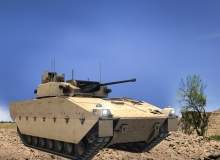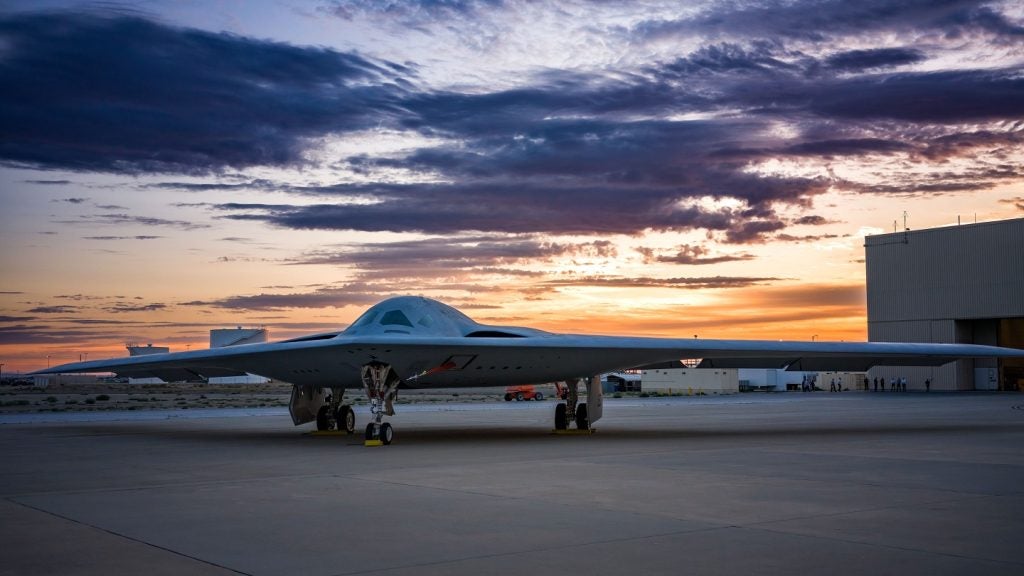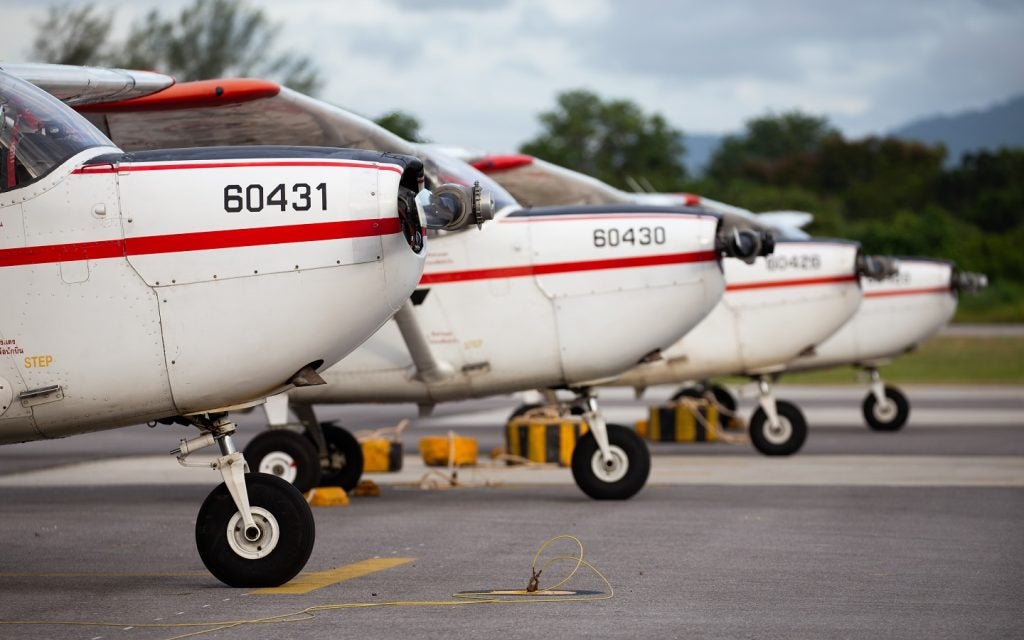
A coalition of Nato and allied countries has been protecting civilians under threat of attack in Libya, enforcing an arms embargo and maintaining a no-fly zone since March 2012. The operation has been carried out almost exclusively through air strikes.
News reports of successful missions and the combat debut of effective new fighter jet technology such as the UK Royal Air Force (RAF) Eurofighter Typhoons and the Swedish Air Force Gripens make it easy to assume that a similar approach could be more widely adopted in current and future conflicts.
However, according to Wing Commander Martin Tinworth, a spokesman for the RAF, the approach taken with Libya was very specific to that conflict. He reveals that a host of other factors affect the approach taken with aerial engagements in each theatre, and how they could influence the RAF’s future missions.
Libya strikes designed to protect civilians
"UN Security Council Resolution 1973 (UNSCR1973) was designed to protect the Libyan people and prevent a massacre," says Tinworth. "The reasons behind the course of action being mainly air focussed are multiple and complex with the UNSCR and the politics not allowing Nato ‘boots on the ground’. Thus the move towards air, and to some extent sea, intervention."
Tinworth explains that air power has offered coalition activity the ability to deal with the unexpected, and to react quickly and act globally, with air and space-based intelligence, surveillance and reconnaissance (ISR) enabling strategic choices to be made. Air power can also be sent for and rapidly pulled back again without to much attention, so preserving political options and avoiding unwanted entanglements.
See Also:
In contrast with Libya’s air and sea attacks, operations in Iraq and Afghanistan were more balanced between land and air combat, with the additional use of armed and unarmed unmanned aerial systems, or to use the term preferred by the RAF, remotely piloted air systems (RPAS).
How well do you really know your competitors?
Access the most comprehensive Company Profiles on the market, powered by GlobalData. Save hours of research. Gain competitive edge.

Thank you!
Your download email will arrive shortly
Not ready to buy yet? Download a free sample
We are confident about the unique quality of our Company Profiles. However, we want you to make the most beneficial decision for your business, so we offer a free sample that you can download by submitting the below form
By GlobalData"Both Iraq and Afghanistan were, or are, truly joint operations fought in a combined manner from both the air and the ground with manned aircraft making up the majority of assets operating in both theatres," says Tinworth. "RPAS are used extensively but not as the majority of air assets."
According to Tinworth, the types of air engagements the RAF see vary widely between theatres. There have been few air-to-air engagements in Afghanistan or Libya as neither the Afghan Taliban nor Gadaffi forces offer any notable air-to-air threat to the RAF or Nato coalition forces. Likewise there are few ground-to-air attacks in terms of guided surface-to-air missile attacks from Taliban or Gadaffi forces. However, small arms fire on mainly helicopters continues in Afghanistan but the rate has not increased recently.
Conversely, RAF air-to-ground missions are on the increase in Libya but not in Afghanistan.
RAF redundancies
The RAF was the service most significantly affected by recently announced UK defence job cuts with a planned reduction in headcount of 5,000 personnel by 1 April 2015. Tinworth believes that, though severe, the cuts will not adversely affect the service the RAF delivers.
Of the first tranche of 928 notified they are to be made redundant on 1 September 2011, 441 are volunteers and 487 are non-volunteers. 77% of volunteers have been selected for redundancy.
"It was necessary to reject some volunteers to enable the RAF to retain the right number of people, at the right rank levels and with the right skill-sets," says Tinworth. "No one on operations and in receipt of the operational allowance will be made redundant, in accordance with tri-service policy, unless they have volunteered. These redundancies will not affect the RAF’s delivery of, or support to, current operations."
Joint combat aircraft
Despite a reduction in headcount, the RAF is investing in new combat aircraft technology which could revolutionise future air missions. A key element in this is the joint combat aircraft (JCA) programme to replace carrier-borne aircraft, for which the Lockheed Martin F-35 Joint Strike Fighter (JSF) was selected. JSF is an exceptionally capable fifth-generation, multi-role, supersonic, stealthy aircraft containing cutting-edge technologies, and the programme to produce the platform is the largest single aviation programme in US history.
"JCA capabilities will enable the UK to contribute, from the outset of a campaign, to a variety of missions against a high-threat integrated air defence system," says Tinworth. "Designed to penetrate high-threat airspace, detect, identify, locate and attack targets, JSF utilises a powerful combination of survivability, lethality and multispectral sensors. These capabilities extend JCA’s utility into areas not traditionally seen as the domain of combat aircraft."
Though the complexities inherent in delivering three distinct variants of the multirole aircraft are not without their challenges, JSF enjoys joint support and economies of scale across all JSF partner nations, with a predicted delivery of 3,000 units through the life of the programme.
"JCA will deliver an affordable, sustainable, expeditionary airpower capability for the UK and allow us to be interoperable with our key allies well into the future," says Tinworth.
Future factors
With the decommissioning of the Ark Royal, the UK Armed Forces are without an aircraft carrier until the first Queen Elizabeth Class aircraft carrier comes into service in 2020. The late decision to fit it with CATOBAR gear for the F-35C variant of the JFS rather than the STOVL F-35B has proven controversial, but according to Tinworth has distinct advantages for missions and defence budgets.
"The final decision on variant choice for JSF was based on the outcome of detailed operational and cost analysis conducted during the Strategic Defence and Security Review," he says. "This showed that the CV variant not only offers a greater range and persistence than STOVL, but will also be cheaper to support through life. Furthermore, recent evidence has emerged from the US that the CV variant will be considerably less expensive to purchase."
Another factor that could affect RAF operations is a more widespread use of increasingly advanced RPAS, which Tinworth worries could mean fewer missions for manned aircraft.
"As the number of remotely piloted air systems increases and politicians’ appetite for risk decreases, the general opinion appears to be that this will be the case," Tinworth says.
The right balance
Successful air strikes as part of the Libyan mission by Nato and its allies may have given the impression that future wars may be fought in a similar manner. However, as Iraq and Afghanistan demonstrated, the correct balance of force for the theatre will always need to be identified to optimise the chance of success.
The RAF faces a number of challenges from defence budget cuts and headcount reduction, but with advanced technology, deft command and a flexible approach, the RAF will continue to deliver invaluable air support to current and future engagements.





